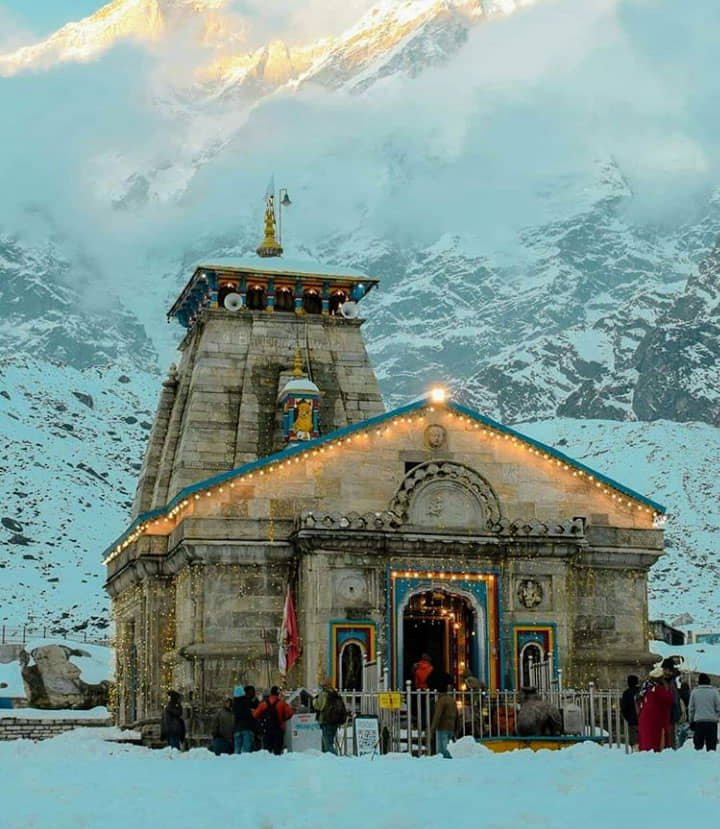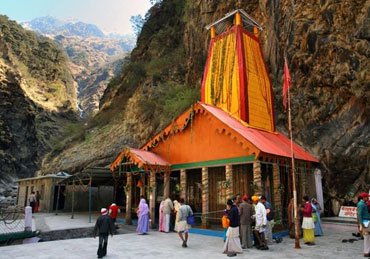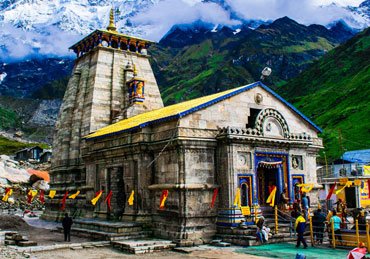
Shri Kedarnath Dham Overview
More than 200 shrines to Lord Shiva may be found in the Chamoli region of Uttarakhand; Kedarnath is the most important. Forgiveness from Lord Shiva for killing their own family members is sought by the Pandavas following their victory over Kauravas in the Kurukshetra conflict. While fleeing, he disguised himself as a buffalo and found sanctuary at Kedarnath.
Upon being pursued, the Lord dove under ground, leaving his hump on the Kedarnath front. Lord Shiva's manifestations emerge in four different locations and are worshipped there. His limbs were seen in Tungnath, Rudranath; his face was seen at Rudranath; his tummy was seen at Madmaheshwar; and his locks (hair) with a head were seen at Kalpeshwar. Kedarnath, together with the four other shrines mentioned above, is known as Panch Kedar (Panch means Five in Sanskrit).
Located in the middle of a vast plateau, the Temple of Kedarnath commands breathtaking views of surrounding snow-capped mountains. Originally constructed in the 8th century AD by Jagad Guru Adi Shankaracharya, the temple now stands adjacent to the site of an even older temple, which the Pandavas had constructed as well. In the gathering hall's interior, the walls are painted with images of deities and religious scenes from the past. A massive Nandi buffalo monument guards the entrance to the shrine.
The Kedarnath temple, dedicated to Lord Shiva, is a work of art. It's made of enormous, heavy, and perfectly carved grey slabs of stone, and it makes you wonder how those massive slabs were handled and moved around in the past. There is a place of worship, as well as a place for pilgrims and guests to congregate, in the temple. The Sadashiva form of Lord Shiva is worshipped inside the temple in the shape of a contraction rock edifice.
Whether
Regardless of the season (October to April)
Days in the winter might be quite frigid. The lowest temperatures can plunge to minus 40 degrees, and snowfall is not uncommon. Traveling during these months isn't a fantastic idea. It's a great time of year, with temperatures that aren't too hot or too cold. When it comes to sightseeing and pilgrimage, the summer months are great.
In the midst of the monsoon season (July to mid-September)
There is a significant drop in temperature and regular rainfall throughout the monsoon season (July to mid-September). Several landslides occur on a regular basis in the area, making it difficult to navigate. Public access to Kedarnath is available from May to October/November, however the temple remnants are blocked from September through November due to landslides. Snowfall is a common occurrence in the winter months, when the region receives a mild summer and chilly winters.
Monsoon (July to Mid - September)
Monsoon (July to mid-September) are accompany with regular rains and also temperature drops down.
The area is prone to sporadic landslides and travelling can be intricate
The holy city of Kedarnath is open for public views from May to October/November but the temple
leftovers closed during the monsoon months as landslides are common.
The region experiences pleasant and cool summer while winters are very chilly and nowfall is a regular occasion.
How to Reach
By Flight: The closest airport to Kedarnath, located 235 kilometres away, is Jolly Grant Airport (20 kilometres from Rishikesh). There are regular flights to and from Delhi's Jolly Grant Airport. The Jolly Grant Airport is easily accessible via motorable roads from Gaurikund. To go to Gaurikund from Jolly Grant Airport, a taxi service is available
Click Here for Flight Booking and Taxi Booking
By Train : Rishikesh, the nearest railway station to Gaurikund, may be reached by train. The railway station at Rishikesh is 243 kilometres from Gaurikund on NH58. Rishikesh is well connected by rail to major Indian cities. Rishikesh is accessible by train. Rishikesh and Gaurikund are connected by motorable roads. Gaurikund is accessible by taxi and bus from Rishikesh, Haridwar, Tehri, and a number of other locations.
Click Here For Train Booking and Taxi Booking
By Road : Gaurikund is easily accessible via road from the state's major tourist spots. From Kashmiri Gate in New Delhi you can take buses towards Haridwar, Rishikesh, and Srinagar to these destinations. From Uttarakhand's major cities like Dehradun, Haridwar, Rishikesh, and others, buses and taxis can easily transport you to Gaurikund. National Highway 58 connects Gaurikund to Ghaziabad.
Click Here For Bus and Taxi Booking

The Shrine of Yamunotri at the starting place of river Yamuna. On top is a flank of Bandar Poonch peak
View More
Gangotri is one of the beginning sources of Holy River Ganga (Ganges), and one of the important Char
View More
There are more than 200 shrines devoted to Lord Shiva in Chamoli region of Uttarakhand itself, the most...
View More
The main access gate of Badrinath temple is colorful and magnificent popularly known as Singhdwar.
View More